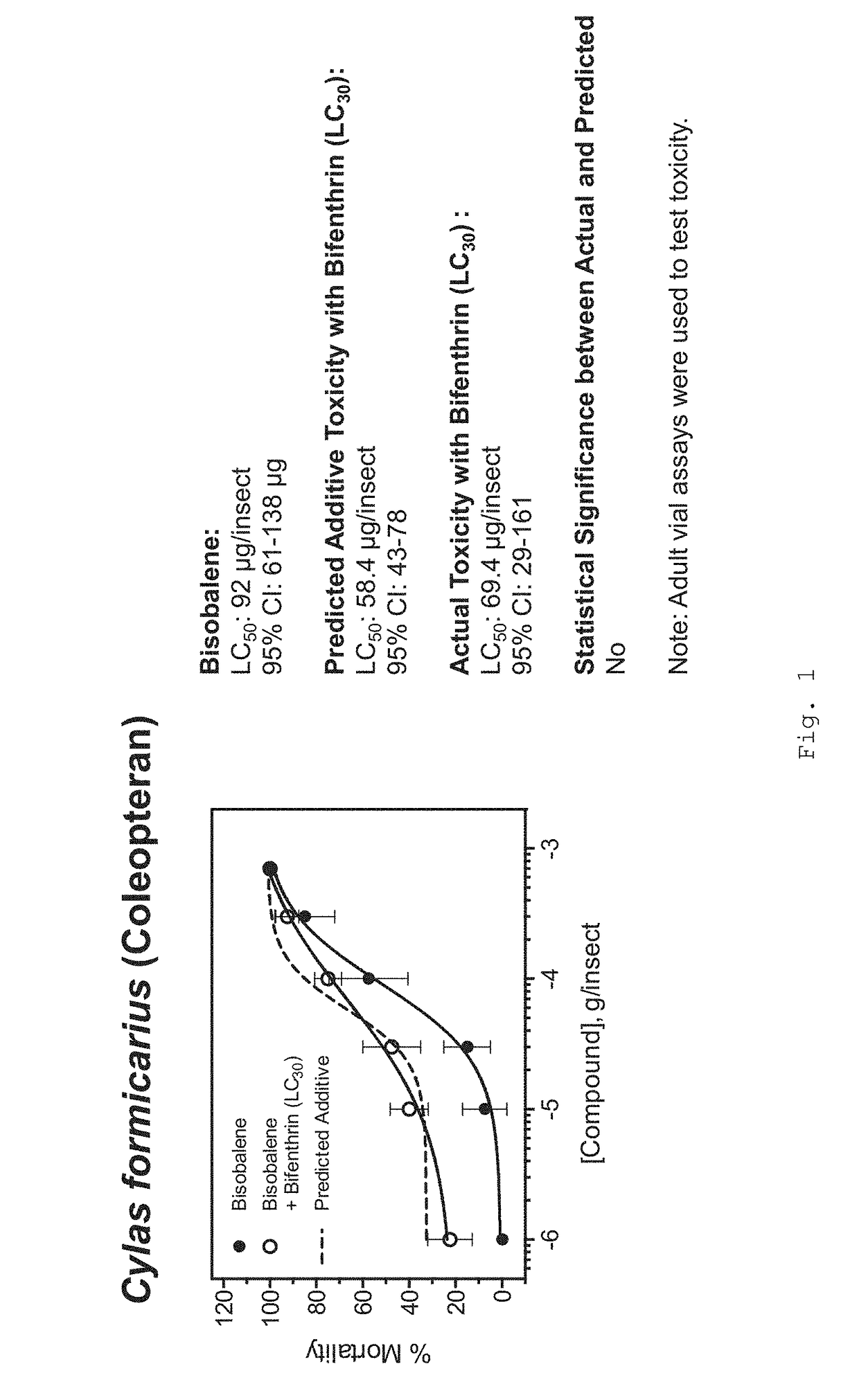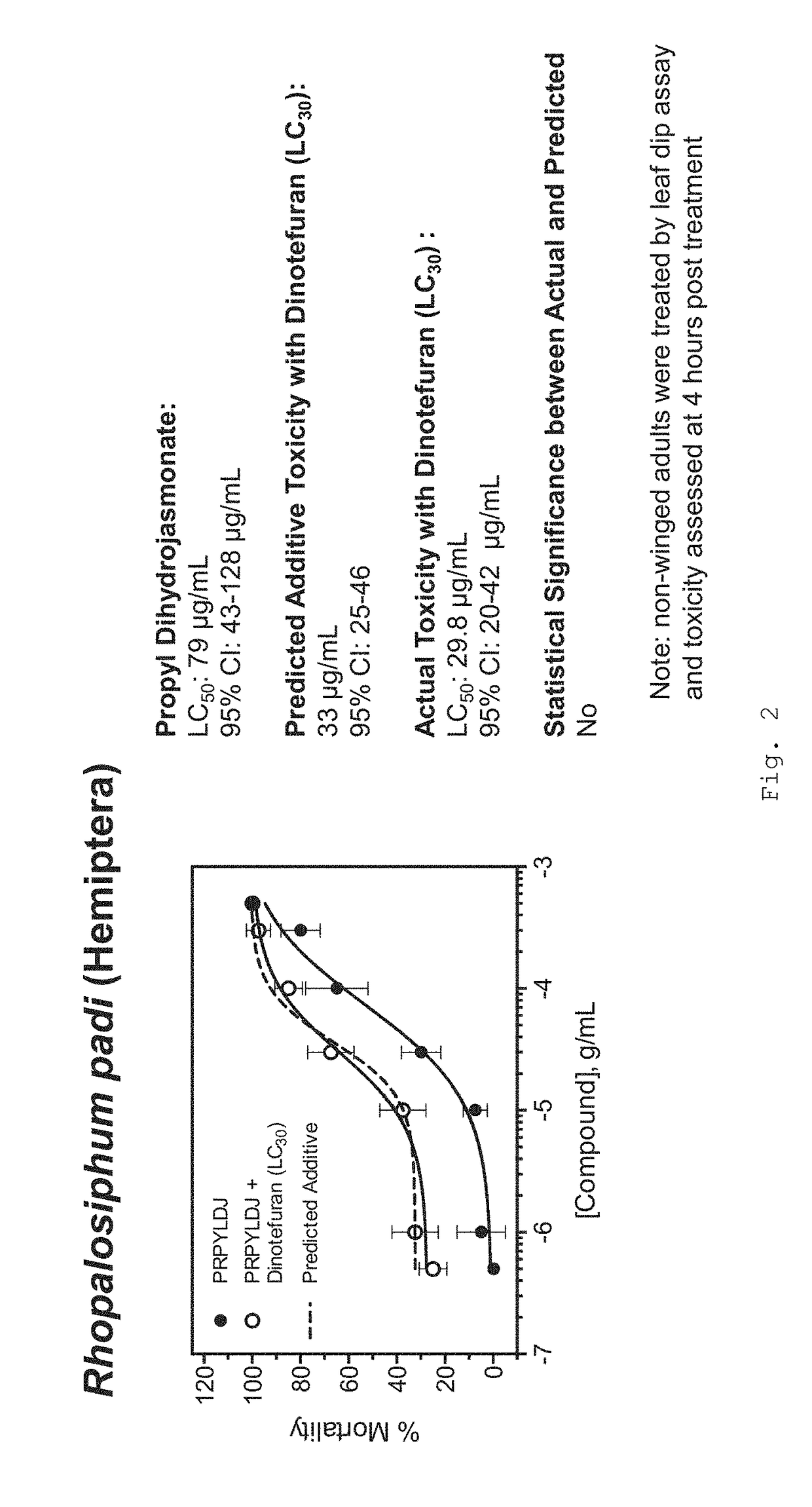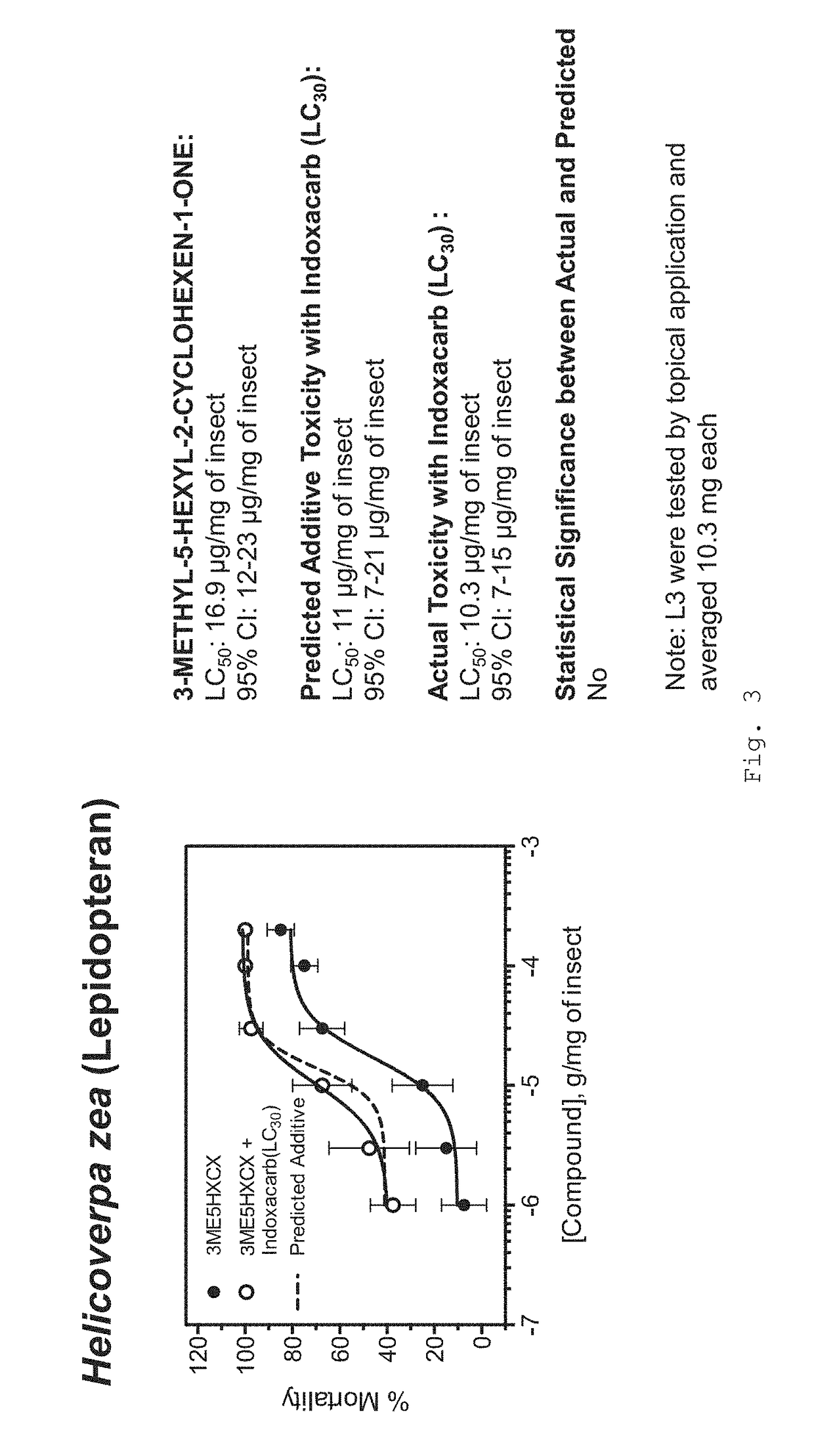Formulations for killing agricultural pests
a technology for agricultural pests and formulations, applied in the field of formulations, can solve the problems of agricultural pests that may not be killed, certain pesticides are relatively expensive, and the active component amount is restricted, so as to reduce the resistance of formulations and reduce the level of conventional toxicant compounds
- Summary
- Abstract
- Description
- Claims
- Application Information
AI Technical Summary
Benefits of technology
Problems solved by technology
Method used
Image
Examples
examples
[0174]Protocols for the toxicity assessment of insecticides to arthropods of agricultural significance used in the Examples are set forth below.
Aphid Leaf Dip Bioassays
[0175]Bioassay protocols followed Brown et al. (2012) with some modifications. An individual leaf infested with aphids was removed from the rearing plant and randomly assigned to each treatment. Number of nymphs and adults were recorded. Each replicate consisted of 10 leaves assigned to a treatment plus 5 leaves dipped only in double distilled (dd) H2O to control for mortality. Each experiment was replicated 3×. Treatments consisted of commercial formulated insecticides at current labeled field rates or selected concentrations of technical grade products. After mixture, leaves were dipped in 250 ml of insecticide solution for 5 seconds. Each leaf was placed in a 100×15 mm petri dish and returned to the rearing room. Mortality was determined at 1-, 4-, and 24-hours after exposure. Aphids were considered dead if they we...
PUM
 Login to View More
Login to View More Abstract
Description
Claims
Application Information
 Login to View More
Login to View More - R&D
- Intellectual Property
- Life Sciences
- Materials
- Tech Scout
- Unparalleled Data Quality
- Higher Quality Content
- 60% Fewer Hallucinations
Browse by: Latest US Patents, China's latest patents, Technical Efficacy Thesaurus, Application Domain, Technology Topic, Popular Technical Reports.
© 2025 PatSnap. All rights reserved.Legal|Privacy policy|Modern Slavery Act Transparency Statement|Sitemap|About US| Contact US: help@patsnap.com



